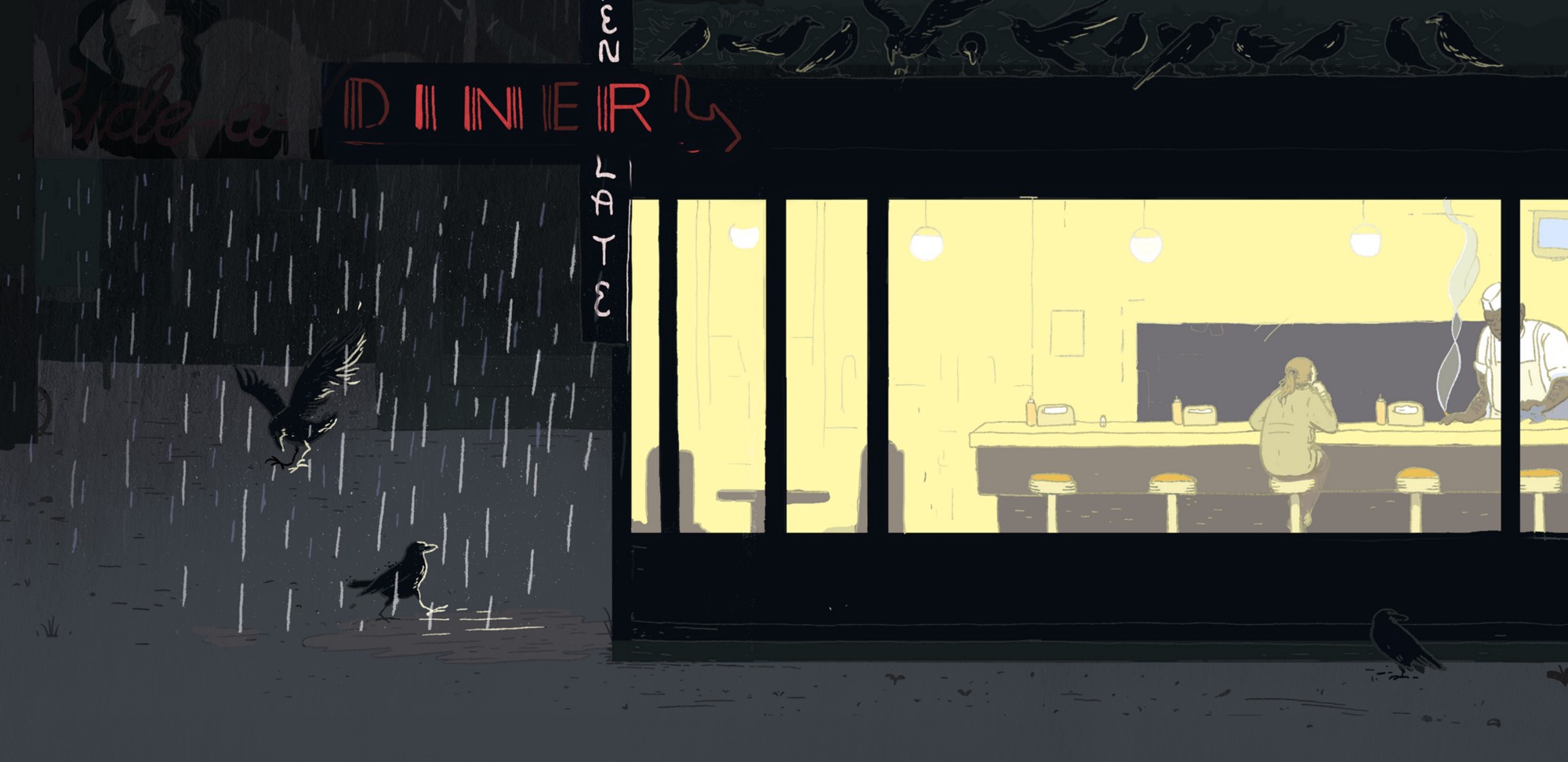Interviews
How to Write About Club Culture While Having the Time of Your Life

Two authors swap stories of NYC & London nightlife, their favorite spots, and how they managed to make sense of the wild scenes

In my new book Night Class: A Downtown Memoir, I meet Lady Gaga’s old Lower East Side tribe, dive into the midnight madness of wild hotspot The Box, and hang out with grown up Limelight club kids and surviving Factory Superstars still shadowed by their friendship with Andy Warhol. I try to make sense of the legacies of New York nightlife queen Susanne Bartsch and Sex and the City costume designer Patricia Field and tell all about my summer spent working as assistant to Club Kid Killer Michael Alig. Serving as backdrop is my own journey from illegal Mexican immigrant to studying sociology at Yale and Columbia and now teaching at NYU. In the book I refer to Tim Lawrence as a fellow “professor of the night,” another academic who has tried to document and understand the magic and mania of nightlife scenes while also enjoying and reveling in them. He’s a fellow traveler in the possibilities and pathos of club culture. In addition to being Professor of Cultural Studies and Co-director of the Centre for Cultural Studies Research at the University of East London, Tim’s most recent book is Life and Death on the New York Dance Floor, 1980–83. In the lead-up to my book’s publication, I caught up with Tim for a chat.
Victor Corona: Here’s a question that I get asked a lot. What’s your favorite party or must-go-to venue? Favorite DJ? My favorite spot has to be The Box, to which I devote chapter 6 of Night Class. It just celebrated a decade of outrageous performance art that attracts everyone from A-list celebrities and the one-percent to Amanda Lepore and New York’s most fabulous new club kids. My favorite DJ is Coleman, who plays at The Box.
Tim Lawrence: After hearing Louie Vega play in London I was so impressed I pretty much moved to NYC in 1994 in order to be able to dance to his selections every Wednesday night at the Sound Factory Bar. It was an intense moment. Louie was the hottest DJ and remixer on the scene, performers such as India, Barbara Tucker and Tito Puente would perform in the club, and Willie Ninja would practice moves when he wasn’t working on the door. Then, in 1997, I interviewed David Mancuso of the Loft for what was supposed to be a quick book about house music and rave culture. At the time I’d barely heard of Mancuso and advised by an in-the-know house music researcher that it wasn’t worth speaking with him. Instead Mancuso’s story of the subterranean emergence of downtown party culture during the early 1970s became the foundation for Love Saves the Day. I also started to head to the Loft, which was revelatory, even though Mancuso was struggling at the time. The breadth of his selections, the way he linked them together into an unfolding sonic narrative, and his unrelenting focus on creating the perfect party environment just blew me away. As for new generation DJs, I went to Joy for the first time during a recent visit to NYC and was super-impressed with Yuji Kawasaki’s selections.
VC: I love the idea of discovering and documenting what you wonderfully describe as the “sonic narratives” that Mancuso unfurled. And now I’m very curious about Joy! In thinking about this process of discovery, maybe in a sense we bring the classroom to the dance floor. How do you import the dance floor to the classroom? A highlight of my semester is always an in-class panel with performers, artists, and writers. Some of my favorites have been the lovely host and party promoter Suzie Hart, the wildly creative artist and aesthetic engineer Muffinhead, dazzling performance artist DeeDee Luxe, and Steve Lewis, former director of the Limelight, Tunnel, The World, Club USA, Palladium, Red Zone and Life. Also, our mutual friend, the great gender theorist Jack Halberstam, came by for a fascinating albeit morose election post mortem.
TL: It sounds like you’ve been running some amazing classes, can I enroll? If I deliver fifty lectures a year only five might be devoted to dance/party/DJ culture. When I get to these lectures I’m usually conscious of the challenge of conveying something meaningful about, say, the cultural and social significance of disco, in just an hour-and-a-half, so I often focus on making some key points within a discursive and interactive setting. My wider concern has been to try to write books that are rigorously researched, analytically sharp, and written in a way that captures the vibrancy of the subject matter — books that are engaging, maybe even inspiring, and so help the culture to become reflective as well as to spread. My first book, Love Saves the Day, led to me starting Loft parties in London with David Mancuso and two friends, Jeremy Gilbert and Colleen Murphy, back in 2003. The parties are still going strong and a number of students have become involved in staging the parties as well as finding work in the scene. Sometimes it seems as though half of the people who come to these parties have read my books and a bunch of other parties have mushroomed out of them as well. So there are all of these manifestations, all of these connections that run between the historical culture, the research, the university that supports my research and employs me to teach, and contemporary culture.


VC: So you made the jump from the classroom to actually producing and curating the dance floor at your Loft party. I need to go! It’s lovely that this nexus of manifestations has emerged. It has happened with some of my students too. But as always, there are naysayers, so as Venus Xtravaganza said in Paris Is Burning, “Let’s talk about reading,” as in the art of deftly criticizing and insulting someone. Have other writers ever tried to read you and dismiss your work as frivolous or unimportant? “Oh, so you write about parties?” And the like? Our students actually enjoy nightlife quite a bit, unlike our beige colleagues. Teaching about it can make for popular classes, which colleagues easily resent. At Columbia, for example, sociology has mostly become an arm of public policy. Although the school is in New York, they ignore so much of its urban energies and students’ love of downtown culture.
TL: Well, one author of a disco book, who shall remain nameless, misread, pilfered and used against me one of the underpinning arguments of Love Saves the Day, which was that no seamless distinction could be drawn between the underground and the mainstream. I’m sure no malice was intended, but it hurt a great deal at the time. That’s how academia can sometimes work, with colleagues jostling to come up with original arguments in order to get published and the rest of it. As for students and what they want to study, yes, absolutely, they want to study things that interest them, although in the UK the idea of studying for the sake of gaining knowledge is now pretty much a thing of the past, with education very utilitarian and becoming a productive worker. It means that many traditional humanities subjects are struggling for numbers, even though those subjects provide students with skills that are essential to many careers. The upside is that more and more students are applying for degrees in the performing arts, including music, so I’ve switched from teaching Cultural Studies to teaching Music. But the content of my lectures hasn’t really changed, plus the current cohort of students is more politically and culturally savvy than any I can remember.
Dissipation and Disenchantment: The Writing Life in Argentina in the 1990s
VC: So we have similar issues on both sides of the Atlantic then. Sad to hear, although there are brilliant adaptive strategies like your move to teach Music. Now I’m curious about the shady, pilfering writer you mentioned. I always tell my students, “If you’re going to write, tell the story that only you can tell.” Maybe that applies to nightlife as well, throw the party that only you can throw. Lately, though, I have been asking promoters about how the moods of their parties have changed since Trump’s election. They mention escapism and release, which can really be a double-edged sword. The need to experience something outside of our sad reality can foster wild creativity, dance floor energy, and cultural innovation, but also devolve into excess and danger. What have you noticed in the aftermath of Brexit? Will the results of the very recent election have an impact?
TL: Brexit was felt very deeply by just about everyone who lives in a city and is under the age of 65, so pretty much the entirety of the nightlife demographic. Huge numbers of EU citizens also live and work in cities such as London and Manchester, so the thought that they could be made to leave, or that new arrivals could be prohibited from entering in the future, was pretty devastating within the party scene. It felt like the Leave camp was perfectly happy to rip the soul out of a city such as London, and for what? Some arcane and ultimately unachievable idea of nationalism? Then again, and much as it pains me to say this, there was also something important about the vote, which in many respects was an anti-establishment vote. Successive Conservative and Labour governments had neglected to take care of the displaced working-class poor, and they’d also presided over a totally insane period of property price inflation that, in a very different way, also threatened to dismantle the soul of the city. The response of the Labour Party’s grassroots membership was to elect an improbable leader, Jeremy Corbyn, a principled leftist who’d never craved a position in the government, never mind become the country’s prime minister — effectively our Bernie Sanders, but with a clearer track record of fighting for the rights of ethnic communities and people of colour. The entire political establishment (including the mainstream parliamentary Labour Party) sought to ridicule him, sideline him, destroy him, but having started as a 2001- outsider he went on to win the Labour leadership contest and then successfully defended his position when challenged. The attempt to stop Corbyn and the grassroots movement that gathered around him culminated when Theresa May called an election to win what she and just about every political commentator in the country assumed would be a landslide Conservative majority, a hard Brexit, and the end of the Labour Party as a political (and certainly radical) force. Instead Corbyn ran an inspirational campaign, Labour gained a significant number of seats, May lost her majority and her authority, and talk of a hard Brexit is now more or less dead. Young people were fundamental to Labour’s success, with the grime scene particularly vocal in its support for Corbyn, although to be honest the mobilization of young people was pretty sweeping — so, yes, there’s also a direct correlation between the party scene and the party scene. It’s been a totally astonishing period and gives real hope to those who want to live in a society that’s affordable and organized according to cooperative/communal values rather than competitive/individualistic values.
“The need to experience something outside of our sad reality can foster wild creativity, dance floor energy, and cultural innovation, but also devolve into excess and danger.”

VC: Exploring the political links between the party scenes would be an amazing tangent and certainly a great panel. Let’s do one the next time you’re in New York? If social release and political consciousness may arise from nightlife, what about its occupational hazards, for participants and participant-observers like us? After one too many sips of vodka, I once tumbled off the stage at The Box while dancing — with the owner, a former student, and Lindsay Lohan in the audience. I was so mortified I walked right out. How do we teach, document, analyze, and even celebrate nightlife while also being honest and responsible about its dangers?
TL: That’s a funny story, although to be honest I don’t see nightlife as being dangerous. It’s sad when stories come through of kids dying from drugs, but the numbers involved are infinitesimal compared to the number of people of all ages who die from alcohol consumption, never mind smoking cigarettes. My impression is that the overwhelming majority of partygoers go out to be part of a community and let their hair down. If they take something it’s mainly to help them relax and get into a different space rather than to get high. If they just wanted to get high they’d stay at home. But then all these overblown and highly ideological myths — ideological because they increase the pressure on authorities to close down parties, either to get people to behave in a more conformist way, or to increase real estate prices, etc — fly around. Do you disagree?
“My impression is that the overwhelming majority of partygoers go out to be part of a community and let their hair down…If they just wanted to get high they’d stay at home.”
VC: I agree and definitely don’t mean to pathologize nightlife. When students ask me about drugs I always say that it’s totally possible to really enjoy everything that nightlife has to offer without getting high. And in addition to your points about conformism and gentrification, more and more in New York we hear about noise complaints. So it’s scary to think about neighborhoods like the East Village or Lower East Side becoming empty, dead spaces at night. Again, so much more to be said. It occurs to me that the only sad part about this chat is the recognition that we haven’t partied together yet! Can we turn up the next time you’re in New York?
TL: I’d love to!









